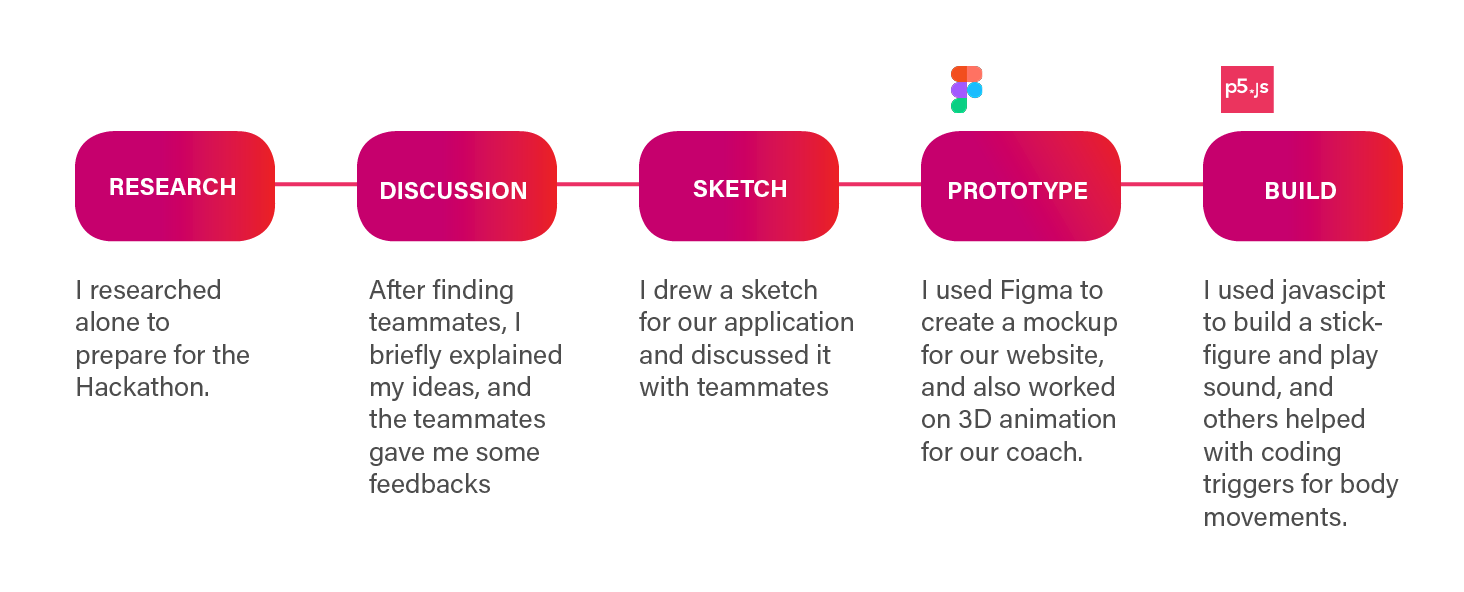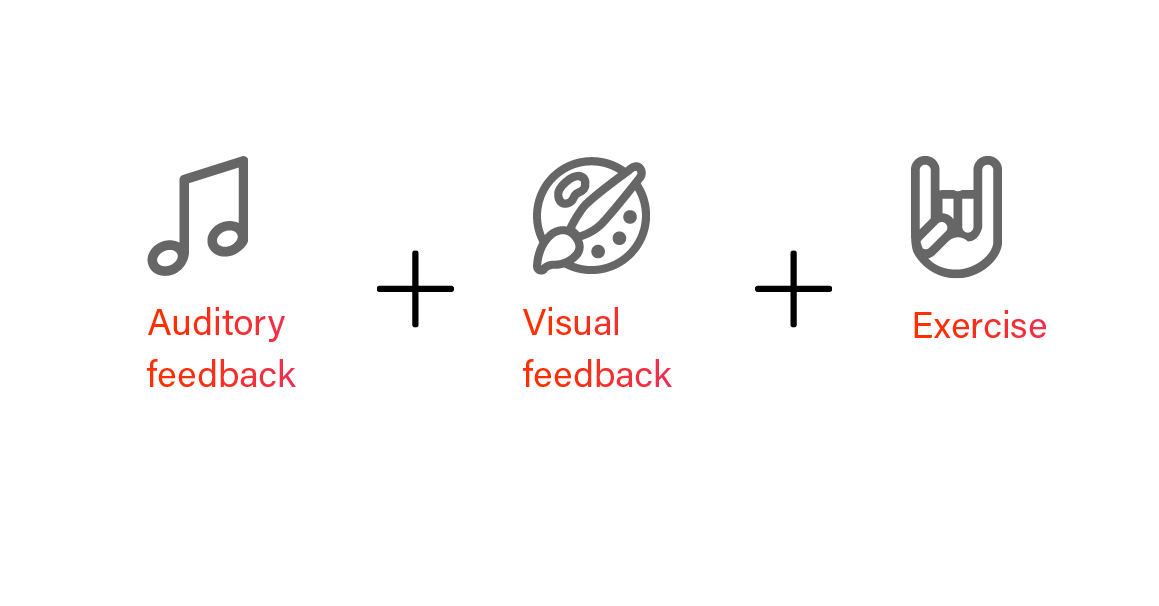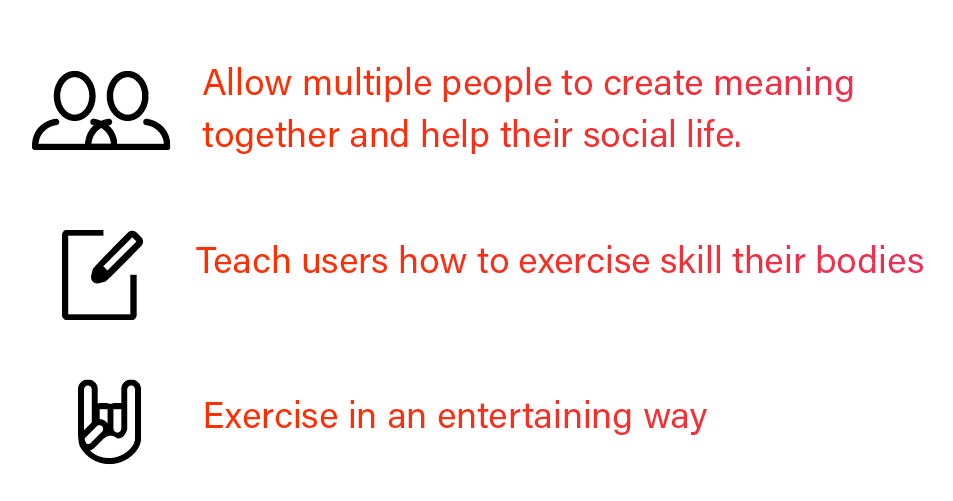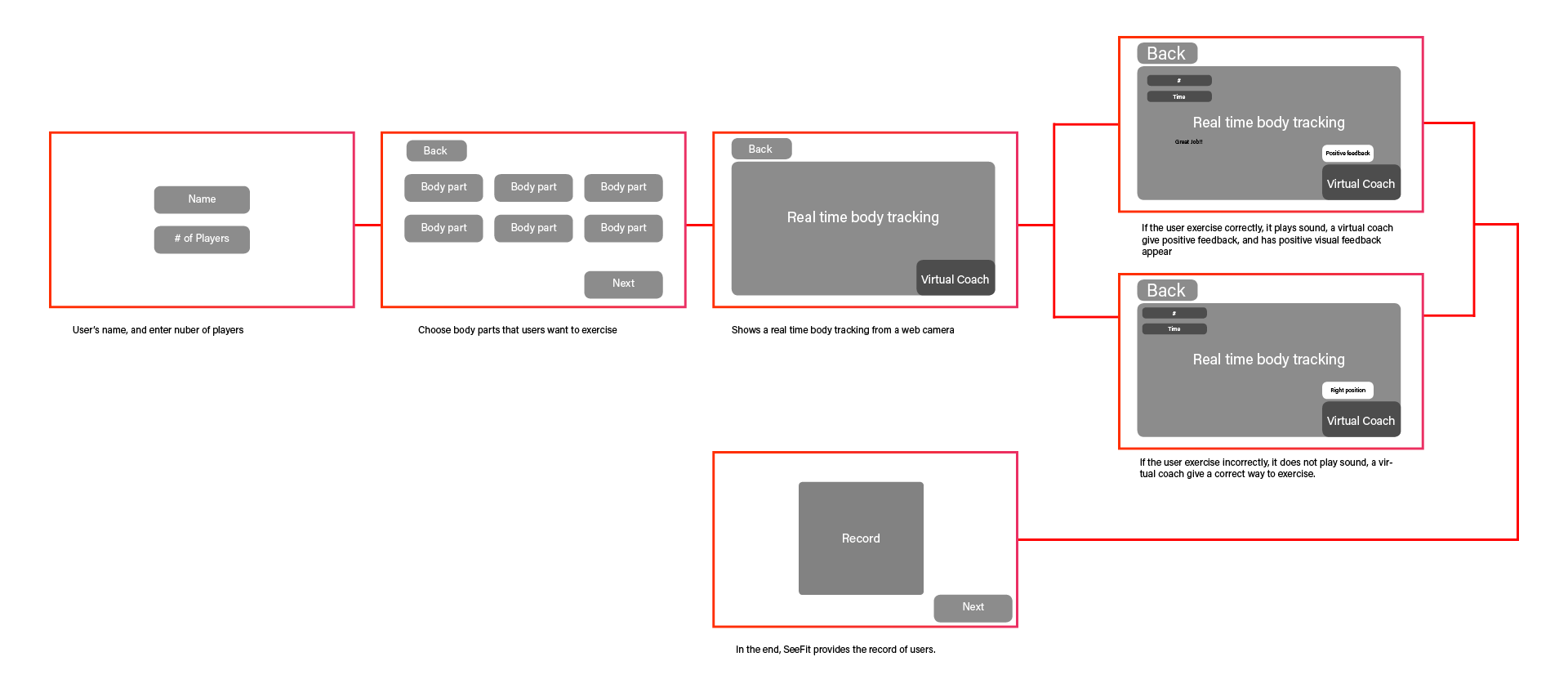SeeFit
SeeFit teaches a user how to exercise in the right way. Sometimes, we may be unsure whether we’re exercising our bodies correctly. To solve this problem, our virtual coach will give feedback based its detection of a user’s body movement. If a user moves correctly, the coach will give positive feedback, so that the user gradually learns the correct movements. SeeFit also makes exercise more entertaining by providing auditory and visual inputs based on the user’s body movement. Ultimately, we want to add a multiplayer section that allows interaction among different users, with the movements of each user generating sound, and the sounds combining to create music.
Team
Hyejun Youn
Brian Li - software engineer (Yale Univ, CS student)
Hannah Han - data scientist (Brown Univ, CS student)
David Wang - software engineer, designer (CMU, CS student)

My Role - Project Leader, UIUX Designer, Engineer
Woked on research, ideation, prototyping, front-end coding using HTML and CSS, javascript, video production using After Effects, 3d animation
Tools
Figma, Mixamo, Unity p5js, openCV After Effects javascript





Both the thyroid and a lower metabolic rate contribute to people with Down syndrome being overweight. This means that children with Down syndrome burn fewer calories overall compared to a typical child and need to need to exercise more to burn off the same number of calories.
A behavioral presentation as a form of communication is particularly salient for individuals with developmental disabilities who are unlikely to express distress verbally or to be able to use abstract thinking skills to connect experiences with thoughts and emotions.
Youth with DS had higher rates of overweight and obesity than youths without DS. Likely determinants of obesity included increased leptin, decreased resting energy expenditure, comorbidities, unfavorable diet, and low physical activity levels.

